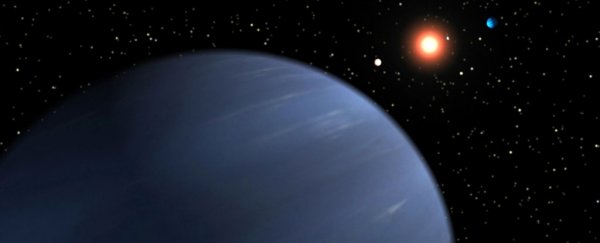Scientists have identified an unusual system of synchronised movement in the exoplanets orbiting a distant star, and the discovery could help us understand more about how planets come to form in other solar systems.
Located some 4,458 light-years away from Earth, the four exoplanets orbiting the star Kepler–223 might not seem remarkable at first glance, but if you were to watch them for a long time – several weeks, for example – you might start to notice something unusual: their orbital periods are in resonance, meaning the amount of time it takes for each to circle Kepler–223 eventually matches up in neat, numerical ratios, much like how the hands of a clock inevitably meet at 12 o'clock.
"The Kepler–223 planetary system has unusually long-term stability because its four planets interact gravitationally to keep the beat of a carefully choreographed dance as they orbit their host star," said astronomer Eric Ford from Penn State University.
Each time Kepler–223's innermost planet (Kepler–223b) orbits the star three times, the second-innermost planet (Kepler–223c) goes around four times. The ratios of the other planets are slightly different, but after enough orbits, their movements end up matching too.
"The orbital periods of the four planets of the Kepler–233 system have ratios of exactly 3 to 4, 4 to 6, and 6 to 8," said Ford. You can see an example of the ratios in the animation below.
 W. Rebel/Penn State
W. Rebel/Penn State
The four gaseous 'sub-Neptune' planets in question are all far more massive than Earth, and they all orbit Kepler–233 extremely closely – closer than Mercury orbits the Sun.
While orbital resonance has been observed previously – the movements of Jupiter's moons, for example – scientists have never seen it quite like this before.
"This is the most extreme example of this phenomenon," said one of the team, Daniel Fabrycky from the University of Chicago.
The researchers think the synchronisation of the movements means the planets formed in a very particular way – with the quartet forming a spatial relationship even as they were assembling from the gas and dust of Kepler–223's protoplanetary disk.
"We think that two planets migrate through this disk, get stuck and then keep migrating together; find a third planet, get stuck, migrate together; find a fourth planet and get stuck," said researcher Sean Mills from the University of Chicago.
The team identified the orbital periods using data from the Kepler and Keck telescopes, and while the clockwork-like movements don't resemble any planetary orbits around our Sun, the team thinks it's possible a similar phenomenon once also took place in our Solar System.
The researchers speculate that the larger planets in our Solar System – Jupiter, Saturn, Uranus, and Neptune – could once have occupied a similar orbital configuration, before collisions with objects such as asteroids and planetesimals (small planets) may have broken up their own cosmic dance.
"These resonances are extremely fragile," said Fabrycky. "If bodies were flying around and hitting each other, then they would have dislodged the planets from the resonance."
The findings are published in Nature.
